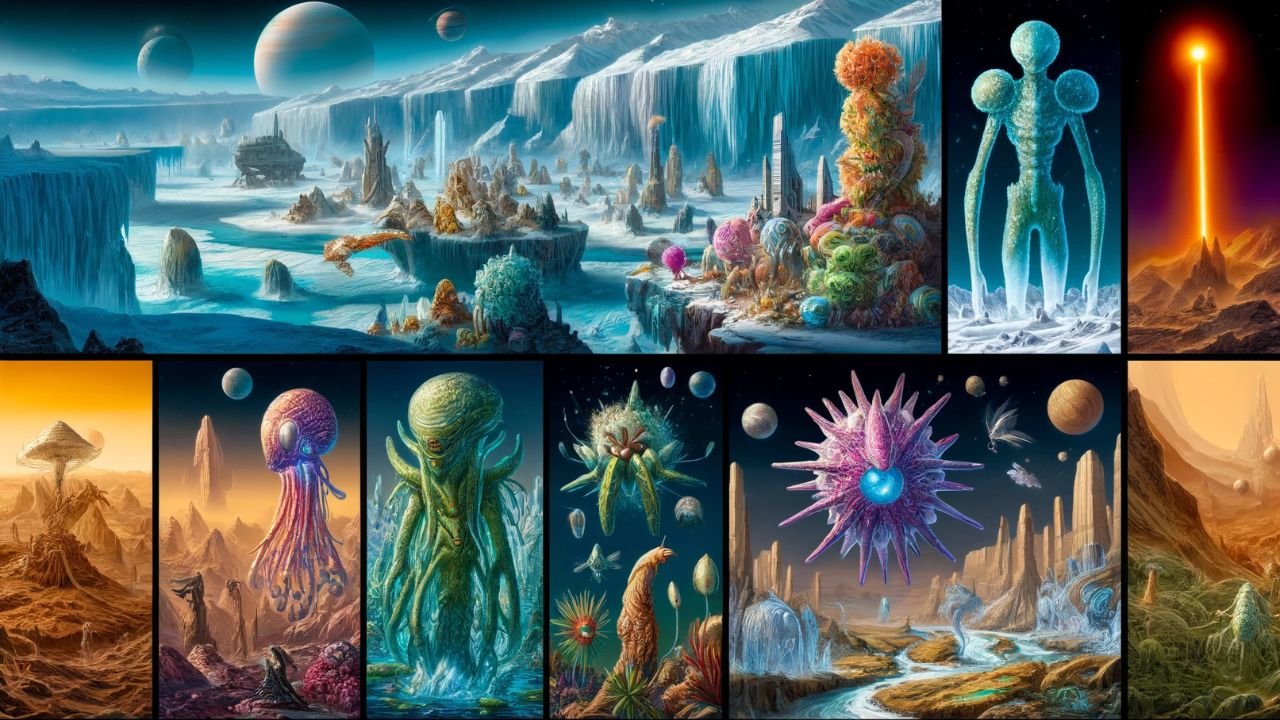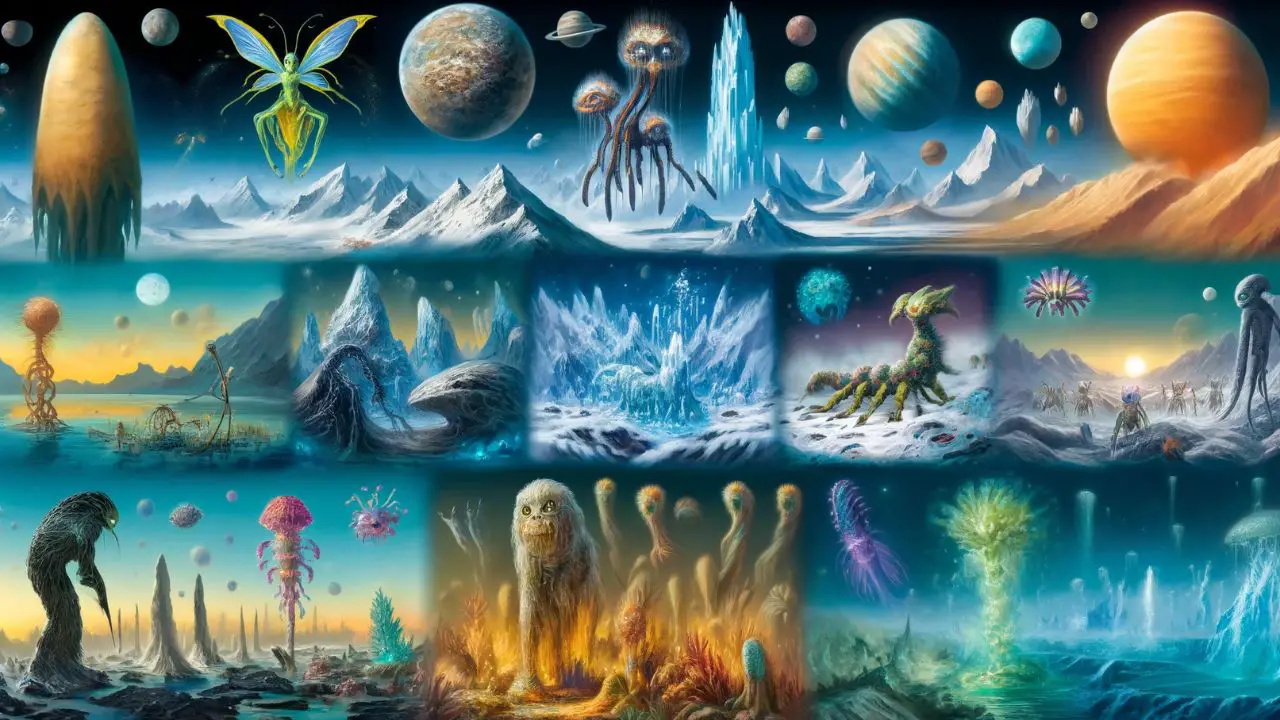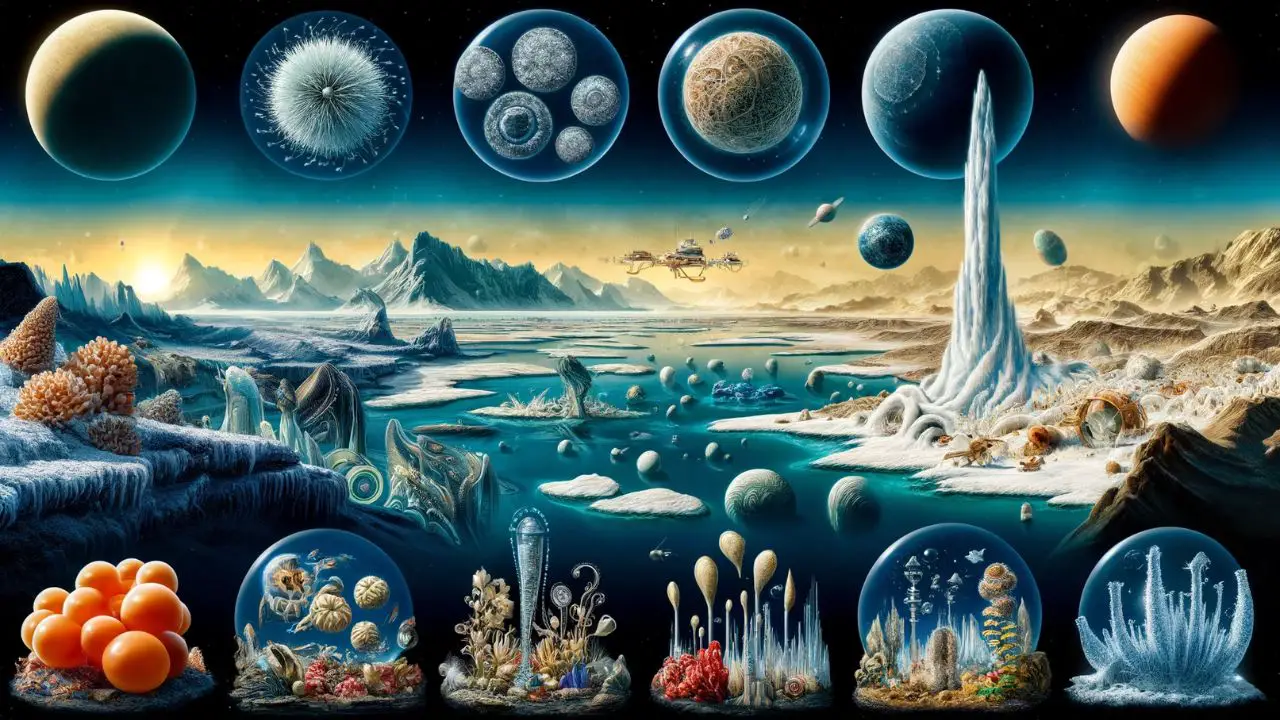The question of what would aliens life look like is as fascinating as it is complex. To speculate intelligently, we must draw upon a broad range of scientific disciplines, from astronomy to evolutionary biology. This article delves into the possibilities, considering the latest findings and theories that go beyond traditional Earth-based analogies.
What Would Aliens Look Like
The Role of Planetary Environments
Alien life is likely to be shaped by the environments of their home planets. Conditions such as gravity, temperature, atmospheric composition, and radiation levels play crucial roles in determining the possible forms and functions of extraterrestrial organisms.
- High-Gravity Worlds: On planets with higher gravity than Earth, organisms might evolve to be more robust and compact. Studies suggest that life forms on such planets could develop stronger, denser skeletal structures to support their weight. Examples from Earth, like deep-sea creatures that withstand immense pressure, can provide analogs but are not definitive.
- Extreme Temperatures: In extreme cold, like on Saturn’s moon Titan, organisms could have antifreeze-like proteins to survive in sub-zero temperatures. Recent research indicates that methane-based solvents could replace water, supporting life that is chemically very different from terrestrial organisms. On hot planets, extremophiles like those found in hydrothermal vents on Earth offer clues about possible adaptations to high temperatures.
- Atmospheric Variations: Planets with thick, gaseous atmospheres might host aerial or floating life forms. Current theories suggest that in a dense atmosphere, lighter-than-air organisms could evolve, resembling Earth’s jellyfish but capable of floating through thick clouds of methane or hydrogen.
- Radiation Exposure: High radiation environments, such as those close to active stars, could foster life forms with unique protective mechanisms. Studies have shown that certain Earth bacteria, like Deinococcus radiodurans, can survive extreme radiation by repairing their DNA. Similar organisms on other planets might develop reflective or absorptive adaptations to manage radiation levels.
Biochemical Diversity
While carbon is the backbone of life on Earth, it may not be the only basis for life in the universe. Recent research suggests several alternative chemistries that could support life in different environments.
🔬 Subscribe to SciMail
Get the latest science discoveries straight to your inbox!
- Silicon-Based Life: Silicon, like carbon, can form complex molecules and is abundant in the universe. However, silicon-based life forms would likely exist at higher temperatures where silicon compounds are stable. Recent simulations show that such life forms might have very different metabolic pathways compared to carbon-based organisms.
- Ammonia as a Solvent: Ammonia could serve as a liquid medium for life in cold environments. Studies indicate that ammonia can dissolve organic molecules and support biochemical reactions at lower temperatures than water. Life forms based on ammonia would likely have different structural proteins and membranes suited to a colder, more reactive medium.
- Hydrocarbon-Based Life: On Titan, where liquid methane and ethane exist, life might use hydrocarbons as a solvent instead of water. This type of life would have biochemistry that operates at much lower temperatures, potentially using energy sources from chemical reactions rather than sunlight.
Evolutionary Adaptations
- Photosynthesis Variants: If light is available, alien plants might evolve different pigments to capture available wavelengths, leading to a diversity of colors beyond green. Theoretical models predict the existence of red, blue, or even black photosynthetic pigments depending on the star’s light spectrum.
- Sensory Systems: Aliens might have evolved sensory systems to navigate their environments. On dark planets, echolocation or other forms of non-visual perception could be prevalent. Advanced sensory adaptations could include the ability to detect magnetic fields or radiation.
- Mobility and Locomotion: The mode of locomotion would depend on the environmental context. On low-gravity planets, organisms might use expansive wings or gliding mechanisms, while in high-gravity environments, stronger, stubby limbs would be more efficient.
- Energy Acquisition: Life on planets with scarce sunlight might rely on chemical energy sources. Recent studies suggest that chemosynthesis, similar to what occurs in Earth’s deep-sea vents, could support ecosystems on planets lacking sunlight. This expands the potential for life in subsurface oceans on moons like Europa and Enceladus.
Technological Implications for Discovery
Modern technology is enhancing our ability to detect and study extraterrestrial life. Next-generation telescopes, such as the James Webb Space Telescope, offer unprecedented sensitivity in detecting atmospheric biosignatures on exoplanets. Additionally, AI algorithms are revolutionizing the analysis of vast datasets, improving our ability to identify potential signs of life from a distance.
Conclusion
Imagining what aliens might look like requires a blend of scientific rigor and creative speculation. The possibilities are vast, shaped by the diverse conditions across the universe. While much of our understanding is based on Earth analogs, expanding our perspective to include alternative biochemistries and adaptive strategies enriches our exploration of this intriguing question. With the continuous advancement in technology and science, the day we discover what aliens truly look like might not be far off, and it is likely to exceed our wildest imaginations.




Leave a Reply